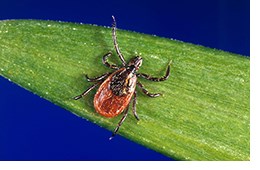The Northwestern Health Unit recorded seven lab confirmed cases of Lyme disease in the region in 2022.
But that number may be underreported, says health unit environmental health manager Thomas Nabb, adding not all cases are lab tested.
Nabb said because it’s established that Lyme disease is in the area, the health unit no longer accepts ticks.
“We still continue with our active surveillance,” he said. “We have inspectors that go out and do like tick dragging to try and find populations of ticks.”
However, Nabb said the health unit had already ended passive surveillance just before the pandemic based on Public Health Ontario's best practices, which says if a health unit is in an at-risk area or receives a lot of submissions, it's not recommended.
Nabb said when they did passive surveillance, they would often let the people know what kind of tick it was just because they were already identifying them. He said now there are other resources that can provide that service, such as etick.ca.
“They also have an app that individuals, if they want to know the type of tick or have someone identify it, they could go that route,” he said. “We also provide education materials to the public on how to identify a tick themselves too.”
He said even with passive surveillance, the tick would be sent away for testing and results wouldn’t be known for three to four months, which wouldn’t be useful.
“If an individual does [present with symptoms or believes] that they did have a deer tick on them and it was attached and they're unsure how long, we recommend that they go see a health care practitioner to do a complete a risk assessment,” he said.
Nabb said despite recent hot weather, a best practice is to wear long sleeves and long pants to prevent exposure to ticks.
“We do recommend that when you're out in the forest or on trails and stuff like that, enjoying our wilderness that you do check checks, after each activity because you want to be able to pull them off as quick as possible because the risk, especially for Lyme disease, occurs after the tick has been on for an extended period of time,” he said.
